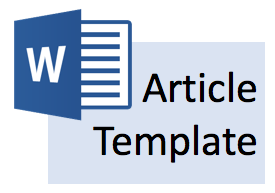UPAYA MENINGKATKAN KEAKTIFAN DAN PRESTASI BELAJAR SISWA MELALUI MODEL GROUP INVESTIGATION PADA MATA PELAJARAN MENGOPERASIKAN PERALATAN KANTOR DI SMK NEGERI 1 SUKOHARJO TAHUN AJARAN 2015/2016
Abstract
The results of research shows that through the application of cooperative learning model with type Group Investigation (GI) can improve activeness and learning achievement Manage office equipment at Grade XI Departement Office State Vocational High School 1 Sukoharjo In Academic Year 2015/2016. The increase occurred in the first cycle and the second cycle. Before application of cooperative learning model with type Group Investigation (GI) grade average score is 73 with the percentage of completeness 34.8%. In the first cycle class average value increased to 77.12 with the percentage of completeness 78.13% and the second cycle the average value increased to 80 grade with a percentage of completeness 84.83%. The conclusions of this research is the application of cooperative learning model type Group Investigation (GI) can improve learning achievement Goods Administration subject matter in Grade XI Marketing of State Vocational High School 1 Sukoharjo.
Full Text:
PDFReferences
Abrami, P. C., Poulsen, C. and Chambers, B. (2004). Teacher motivation to implement an educational innovation: Factors differentiating users and non- users of cooperative learning. Educational Psychology, 24, 201-216.
Akçay, N. O dan Doymus, K. (2012). The Effects of Group Investigation and Cooperative Learning Techniques Applied in Teaching Force and Motion Subjects on Students’ Academic Achievements. Journal of Educational Sciences Research, 2 (1), 109-123.
Aksoy, G. ve Doymus, K. (2011). Effect of literacy-practice techniques in the application of cooperative science and technology courses. Gazi University Faculty of Education Journal. 31(2), 43-59.
Anitah, S. (2009). Teknologi Pembelajaran. Surakarta: Yuma Pustaka
Damini, M & Surian, A. (2013). Enhancing Intercultural Sensitivity through Group Investigation-a Co-operative Learning Approach. Journal of Co- operative Studies, 46 (2), 24-3.
Daryanto. (2013). Media Pembelajatran: Peranannya Sangat Penting dalam Mencapai Tujuan Pembelajaran. Yogyakarta: Gava Media.
Doymus, K. (2007). Effects of a Cooperative learning strategy on teaching and learning phases of matter and one- component phase diagrams, Journal of Chemical Education, 84 (11), 1857-1860.
Doymus, K., Karaçöp, A. & Simsek, Ü. (2010). Effects of jigsaw and animation techniques on students’ understanding of concepts and subjects in electrochemistry. Educational Technology Research and Development, 5, 671-691.
Doymus, K., Simsek, Ü. & Simsek, U. (2005). Collaborative learning in the compilation method: the method of cooperative learning and related studies. Erzincan Education Faculty Journal, 7 (1), 59–83.
Fer, S. & Cirik, I. (2006). On teachers and students, the reliability and validity of the scale of a constructivist learning environment What is the job ?. Y editepe University Faculty of Education Journal. 2 (1), 1-26.
Hanafiah, N dan Suhana, C. (2009). Konsep Strategi Pembelajaran. Bandung: Refika Aditama.
Hwang, W.Y., Shadiev, R., Wang,C.Y., & Huang, Z. H. (2012). A pilot study of cooperative programming learning behavior and its relationship with students' learning performance. Computers & Education, 58 (4), 12671281.
Isjoni. (2009). Pembelajaran Kooperatif Meningkatkan Kecerdasan Komunikasi Antar Siswa. Yogyakarta: Pustaka Pelajar.
Johnson, D. W. & Johnson, R. T. (1999). Making cooperative learning work. Theory Into Practice, 38 (2), 67–73.
Johnson, D. W., Johnson R. T. & Holubec, E. J. (1994). The new circles of learning: cooperation in the classroom and school. Association for Supervision and Curriculum Development, 1250 N. Pitt Street, Alexandria, VA 22314.
Ko , Y., Doymuş, K., Kara öp A., & Şïmşek, U. (2010). The Effect of Two Cooperative Learning Strategies on the Teaching and Learning of the Topics of Chemical Kinetics. Journal of Turkish Science Education, 7 (2), 52-65.
Lai, Y.-S., Tsai, H.-H., & Yu, P.-T. (2011). Screen-capturing System with Two- layer Display for PowerPoint Presentation to Enhance Classroom Education. Educational T echnology & Society, 14 (3), 69–81.
Penciner, R. (2013). Does PowerPoint enhance learning?. CJEM, 15 (2), 109-112.
Slavin, R. E. (2005). Cooperative Learning Theory Research and Practice. Terjemahan Nurulita Yusron. Bandung: Penerbit Nusa Dua.
Suparno, A. S. (2001). Membangun Kompetensi Belajar. Jakarta : Direktorat Jenderal Pendidikan Tinggi Departemen Pendidikan Nasional.
Thobroni dan Mustofa. (2011). Pembelajaran: Pengembangan Wacana dan Praktik Pembelajaran dalam Pembangunan Nasional. Jogjakarta: Ar-Ruzz Media.
Turan S., Konan A., Kiliç Y. A., Özvaris S. B., & Sayek I. (2012). The effect of problem-based learning with cooperative-learning strategies in surgery clerkships. Journal of Surgical Education, 69 (2), 226-230.
Refbacks
- There are currently no refbacks.


